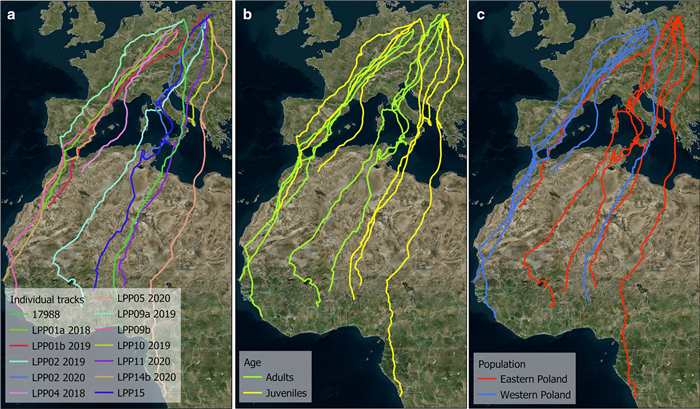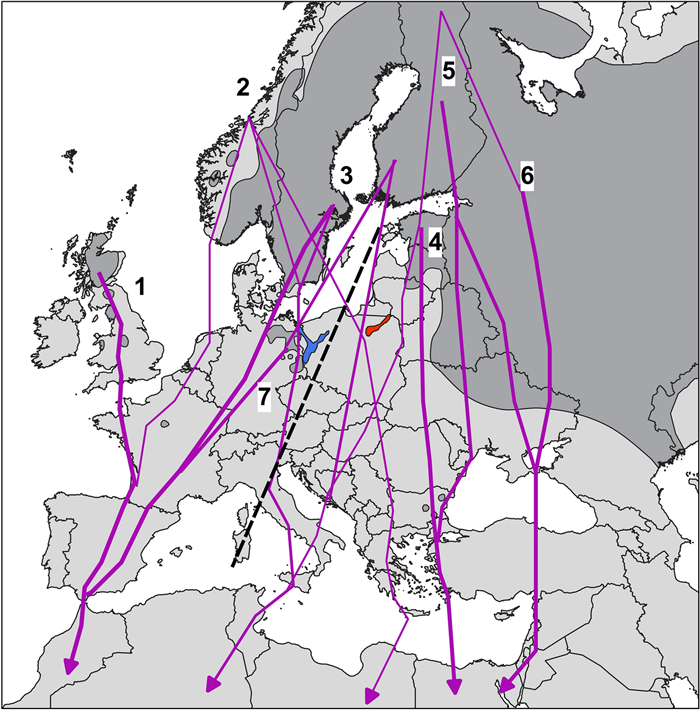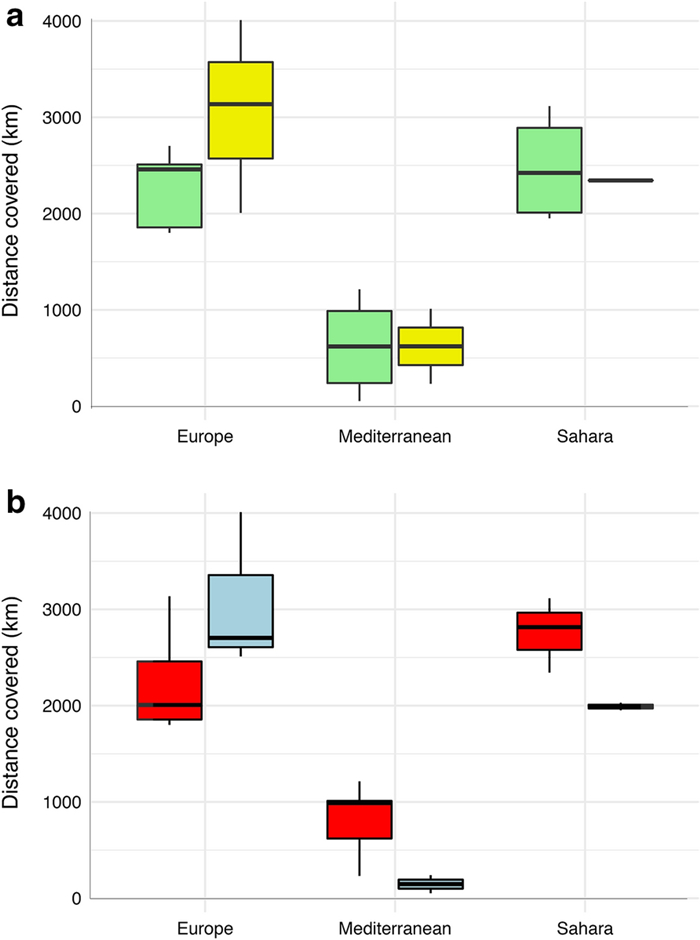
Autumn migration paths of GPS-tagged Ospreys from Poland shown by individual (a), age (b) and source population (c)
Figures of the Article
-
![]() Main migration paths of Ospreys from northern Europe and predicted migratory division (dashed line) between Osprey populations in eastern (red) and western (blue) Poland. Thin and thick lines show relative importance of migration paths and refer to studies by: (1) Mackrill 2017, (2) Østnes et al. 2019, (3) Alerstam et al. 2006, Klaassen et al. 2011, (4) Väli and Sellis 2015, (5) LUOMUS 2020, (6) Babushkin et al. 2019, (7) Meyburg et al. 2018
Main migration paths of Ospreys from northern Europe and predicted migratory division (dashed line) between Osprey populations in eastern (red) and western (blue) Poland. Thin and thick lines show relative importance of migration paths and refer to studies by: (1) Mackrill 2017, (2) Østnes et al. 2019, (3) Alerstam et al. 2006, Klaassen et al. 2011, (4) Väli and Sellis 2015, (5) LUOMUS 2020, (6) Babushkin et al. 2019, (7) Meyburg et al. 2018
-
![]() Autumn migration paths of GPS-tagged Ospreys from Poland shown by individual (a), age (b) and source population (c)
Autumn migration paths of GPS-tagged Ospreys from Poland shown by individual (a), age (b) and source population (c)
-
![]() Departure date (a), total distance (b), duration of migration (c) and number of stopover days (d) shown by GPS-tagged Ospreys from eastern (red) and western (blue) Poland on their autumn migration. p value of the Mann–Whitney test between populations is given for close-to-significant differences
Departure date (a), total distance (b), duration of migration (c) and number of stopover days (d) shown by GPS-tagged Ospreys from eastern (red) and western (blue) Poland on their autumn migration. p value of the Mann–Whitney test between populations is given for close-to-significant differences
-
![]() Distance covered on autumn migration by GPS-tagged Ospreys from Poland, depending on migration stage and divided by individual age (a) and source population (b). Yellow boxes represent juveniles, green: adults, red: eastern population, blue: western population
Distance covered on autumn migration by GPS-tagged Ospreys from Poland, depending on migration stage and divided by individual age (a) and source population (b). Yellow boxes represent juveniles, green: adults, red: eastern population, blue: western population
Related articles
-
2025, 16(1): 100266. DOI: 10.1016/j.avrs.2025.100266
-
2025, 16(1): 100250. DOI: 10.1016/j.avrs.2025.100250
-
2025, 16(1): 100237. DOI: 10.1016/j.avrs.2025.100237
-
2022, 13(1): 100054. DOI: 10.1016/j.avrs.2022.100054
-
2022, 13(1): 100007. DOI: 10.1016/j.avrs.2022.100007
-
2021, 12(1): 14. DOI: 10.1186/s40657-021-00250-z
-
2014, 5(1): 9. DOI: 10.1186/s40657-014-0009-3
-
2014, 5(1): 7. DOI: 10.1186/s40657-014-0007-5
-
2013, 4(3): 240-247. DOI: 10.5122/cbirds.2013.0022
-
2010, 1(2): 156-162. DOI: 10.5122/cbirds.2010.0009


 Download:
Download:








 Email Alerts
Email Alerts RSS Feeds
RSS Feeds